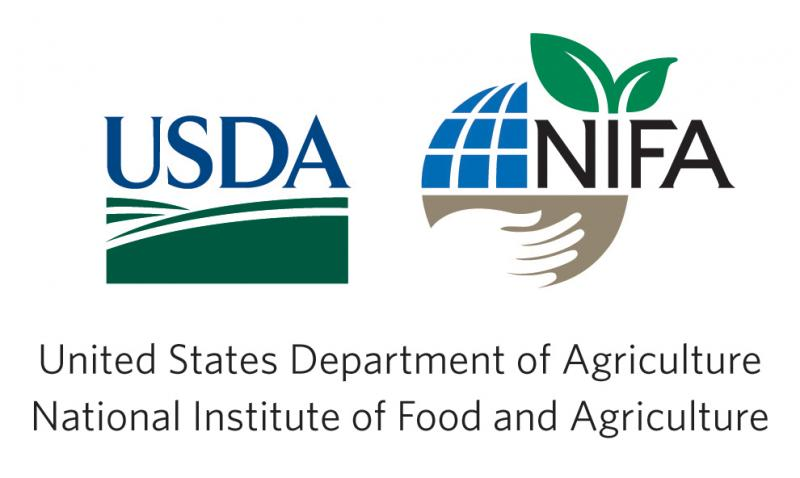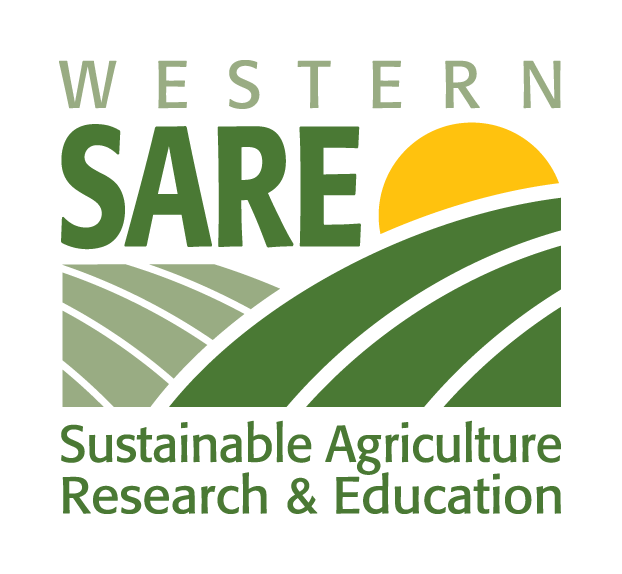In this issue:
- New eOrganic articles
- New Conference Recordings
- NACAA Super Seminar
- Using Sheep to Terminate Cover Crops
- New Ancient Wheat Article in Organic Broadcaster
- Penn State Organic Crop Production Guide
- Principles for Transitioning to Organic Farming Website
- Opportunity to Comment on GMO Regulations
- eOrganic Mission and Resources
New eOrganic Articles
- Making the Most of Mixtures: Considerations for Winter Cover Crops in Temperate Climates, by Charles White, Mary Barbercheck, Tianna DuPont, Denise Finney, Abbe Hamilton, Dave Hartman, Mena Hautau, Jermaine Hinds, Mitch Hunter, Jason Kaye and Jim La Chance, Penn State University.
- Managing Cruciferous and Solanaceous Flea Beetles in Organic Farming Systems, by Joyce Parker, USDA NIFA DOCE and William Snyder, Washington State University.
- Weeds Your Way: How Upstate New York Farmers Manage Weeds, by Brian Baker and Charles Mohler, Cornell University.
New Recordings from Organic Conferences
We're taking a summer break from our webinar series and will return for our 6th season in the fall, but our extensive archive of recordings is now organized by topic here. Also, some of you may have attended live broadcasts from the Organicology and Organic Agriculture Research Symposium this past February. Recently, we've uploaded additional recordings from more of the sessions at those conferences that were not broadcast live online. Find the recordings in our achive and on our YouTube channel, organized by playlist.
NACAA Super Seminar in July 2015
If you are an Extension educator and are planning to attend the NACAA meeting in Sioux Falls, Idaho from July 12-16, eOrganic will be conducting a Super Seminar in partnership with Betsy Rakola of the USDA Organic Literacy Initiative. The seminar will focus on organic certification requirements and transitioning to organic, and provide an introduction to USDA and eOrganic resources for Extension agents. In addition to Betsy Rakola, speakers will include eOrganic leadership team members Fabian Menalled and Alex Stone, and organic producer Carmen Fernholz. Please stop by the eOrganic conference booth as well! For more information on registering for the conference, see the NACAA website.
Using Sheep to Terminate Cover Crops
Using domestic sheep rather than traditional farming equipment to manage fallow and terminate cover crops may enable farmers who grow organic crops to save money, reduce tillage, manage weeds and pests, and reduce the risk of soil erosion, according to Montana State University and North Dakota State University researchers who are working on a USDA NIFA funded project: Reducing Tillage in Organic Crop Systems: Ecological and Economic Impacts of Targeted Sheep Grazing on Cover Crops and Weed management, Soil Health and Stability, Carbon Sequestration and Greenhouse Gas Emissions. To learn more about the project, read this article on the Montana State University website. The project team has also created a video about their project which is available at https://www.youtube.com/watch?
New Ancient Wheats Article
Steve Zwinger and Elizabeth Dyck of the NIFA OREI funded research project Value Added Grains for Local and Regional Food Systems recently published an article in the MOSES Organic Broadcaster: High Consumer Demand Makes Ancient Wheats Hot Commodities. The article discusses consumer interest in ancient wheats, along with some production and dehulling considerations and links to recent trial results from New York and North Dakota. For additional information, Watch the eOrganic webinar on ancient wheats, which was presented by members of the project team in April 2015.
New Pennsylvania Organic Crop Production Guide
Penn State has published a comprehensive new Organic Crop Production Guide which details organic farming practices in the mid-Atlantic region. It includes case studies of successful organic crop farmers in the Northeast, and incorporates recent Penn State research in weed management, cover crop mixtures, the economics of feed and forage production, and reduced-tillage grain production. It also contains sections covering soil health and management, soil fertility, cover crops, insect and disease management, marketing organic crops, planning crop rotations, organic field-crop budgets and other topics. A press release with additional information is available here, and and more information on ordering the guide and a sample pdf can be found here. The print publication costs $35.00, and a pdf version is available for $15.00.
New Website: Principles for Transitioning to Organic Farming
The Principles for Transitioning to Organic Farming website describes an ongoing NIFA ORG research project based at the University of Minnesota, which is developing interactive educational resources to increase understanding of the organic transition process and in the Upper Midwest region. The project will be creating online learning modules and decision case studies, and organizing educational events. The materials will be used by Extension educators and university instructors in their work with transitioning farmers as well as undergraduate students. To learn more, visit the website at http://eorganic.info/transitioning/about, and if you are located in Minnesota or western Wisconsin and are interested in participating in the project's upcoming transitioning-to-organic workshops or listening sessions, please contact Jill Sackett (sacke032@umn.edu or 507-389-5541) to be added to their email list for future events.
Opportunity to Comment on the Regulation of Genetically Engineered Crops
The USDA Animal and Health Protection Service (APHIS) is seeking public comments on questions related to the regulation of genetically engineered crops by June 22, 2015. In March 2015, APHIS announced that they were withdrawing a proposed rule which would have amended regulations for certain genetically engineered organisms, and planned "to begin fresh stakeholder engagement aimed at exploring alternative policy approaches". Find background information on this issue here, and to post a comment on the following questions, go to http://www.regulations.gov/#!docketDetail;D=APHIS-2015-0036
1. Should APHIS regulate based on the characteristics of biotechnology products and the potential risks they may pose, or by the process by which they were created? In either case, what criteria should be used to determine what APHIS regulates? Are there products and processes APHIS should not regulate?
2. The Plant Protection Act gives APHIS the authority to protect plant health through regulatory programs. APHIS has implemented the plant pest authority as part of their biotechnology regulations. Should APHIS add noxious weed provisions to their biotechnology regulations and if so, how? What protection goals should APHIS consider?
3. Are there legal authorities given to USDA outside the Plant Protection Act that APHIS should examine to regulate or oversee the products of biotechnology? What are they, and how would they be used?
4. What non-regulatory solutions or policy alternatives could or should be considered to complement APHIS’s regulatory program?
eOrganic Mission
eOrganic is a web community where organic agriculture farmers, researchers, and educators network; exchange objective, research- and experience-based information; learn together; and communicate regionally, nationally, and internationally. If you have expertise in organic agriculture and would like to develop U.S. certified organic agriculture information, join us at http://eorganic.info.
eOrganic Resources
Find all eOrganic articles, videos and webinars at http://extension.org/organic_production
Connect with eOrganic on Facebook and Twitter, and subscribe to our YouTube channel!
Have a question about organic farming? Use the eXtension Ask an Expert service to connect with the eOrganic community!



